The bakery ingredients supply chain has been under pressure from all sides in the past year.
From poor harvests to logistics to energy costs and labour supply, a blizzard of adversities – many related to the ongoing Covid-19 pandemic and Brexit – has been assailing bakery businesses big and small.
With UK food price inflation now at its highest in 10 years, the escalating conflict between Russia and the west on the border of Ukraine is the icing on a particularly unpalatable cake.
Ukraine is projected to be the world’s fourth largest exporter of wheat, and Russia the top wheat exporter, according to International Grains Council data. Military action could disrupt supply of key bakery crops including wheat and oilseeds, as well as energy supplies to Europe.
Aside from the Ukraine situation, how are the various cost pressures causing inflation on baking commodities, such as flour, sugar, dairy and oils, likely to play out in 2022?

Increasing pressure
For bakers, wheat, energy, transport and packaging have been the key areas hit by supply chain pressures, says Alex Waugh, director at trade body UK Flour Millers.
This past year has also been the worst in 30 years for price rises in palm and rapeseed oils, according to Gary Lewis, president of the National Edible Oils Distributors’ Association. A La Niña weather pattern has affected both wheat and oils production around the world, with Covid disruption also hitting production and logistics.
“An increase will slowly make its way to the consumer and could result in prices of bread rising by over 7%”
UK-delivered bread wheat prices reached a record high before Christmas, up 35% on last year’s equivalent, and 77% higher than two years ago, Waugh says, citing Agriculture and Horticulture Development Board data.
“Such an increase will slowly make its way to the consumer and could result in prices of the cheapest breads rising by over 7%, where the cost of wheat comprises a higher percentage of the product’s total cost,” estimates Carlos Mera, head of agri-commodities at Rabobank.
Meanwhile, Lewis reports that palm oil prices went up by 40% to 50% in the past year due to Covid shutdowns in producing countries. Rapeseed oil was up 50% due to various factors. Sunflower oil decreased in price by about 20% compared with spikes the previous year. Escalating demand for biofuels is also diverting edible oils supply from the food industry.
Similar price pressures have played out in butter, with sugar also seeing price rises after poor harvests in various producing countries and a Covid-related logistics squeeze. Dairy is seeing tight UK and global supplies, as high input costs impact yields.

Transport problems
Waugh says that challenges in relation to haulage have hit supply of grain and similar commodities in the UK. “Millers reported that in October and November more than 20% of booked grain deliveries from UK sources didn’t arrive at all, and less than half of all deliveries arrived on the expected day,” says Waugh.
There have since been improvements and, along with better pay and conditions, government policies to expand the availability of drivers should help reduce problems in the medium term.
”Higher farm input costs, expensive shipping and strong demand will likely mean high prices for 2022”
International freight costs are massively up over the past year from all origins, says Waugh. Container freight rates from China and south-east Asia to Europe stand four to six times higher than at the start of 2020. This has had an impact on all imported ingredients and packaging.
Energy costs
Steeply escalating energy prices for gas, electricity and diesel also have a significant impact on the full range of commodities.
Energy regulator Ofgem records both gas and electricity forward contract costs more than double the level of February 2021. The Department for Business, Energy and Industrial Strategy figures show diesel prices over 150p/litre pre-Christmas, up by more than 25% year on year.
Increases in market prices and availability problems on packaging, driven by higher international shipping and energy prices, are also adding to bakery costs. On top of that are inflationary pressures on wages, with strong competition for workers in the transport and logistic sectors driven by skills shortages and the growth in retail home delivery.

Raw materials
Latest Office of National Statistics data on inflation, as of the end of December 2021, show food prices up by 4.5%, the highest rise in nearly 10 years, with the cost of oils and fats up 13.1%, vegetables up 6.0% and meat up 4.4%.
“Inflation will weaken but remain above previous levels for much of 2022”
Rising costs of raw materials are still filtering through, says Mera. “Don’t bet on pressures subsiding any time soon. Higher farm input costs, expensive shipping and strong demand will likely mean high prices for 2022 at the very least.”
The economics team at industry body IGD is also pessimistic about inflation, says James Walton, chief economist. “We think inflation will weaken, but that it will remain above previous levels for much of 2022, with food producers affected.”
The introduction of new border measures impacting food imports from the EU, and increased minimum wage and National Insurance contributions (which will also increase labour costs) are set to drive up inflation in 2022, he says. Impending new regulations on promotions of high fat, sugar and salt (HFSS) foods and an ongoing shortfall in energy and labour supply are also concerns.
Greggs CEO Roger Whiteside also forecast in the latest trading update on 6 January that inflationary pressures are likely to remain elevated in the first few months of 2022.
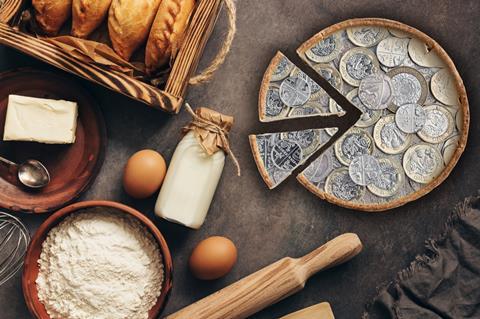
Better signs
There is some cautious optimism in the industry that summer 2022 might bring respite. The latest World Agricultural Supply and Demand Estimates from the US Department of Agriculture suggests that supplies of wheat will be stable in 2021/22, with stock starting to build.
Waugh is hopeful that the 2022 harvests in the northern hemisphere will result in improved supply of grains and an abatement in wheat prices. “But there is a long way to go until the situation becomes clearer in the summer,” he adds.
On edible oils, Gary Lewis sees prices looking better from August, if no further weather problems occur. On sugar, European prices increased over the past year and world market prices too. Harvests in 2021/22 are better, but with factors such as energy costs to consider, it is not clear what prices will do.
Local logistical problems should gradually abate in 2022, post-Covid. However, economic recovery is likely to mean that demand for fuel and international shipping remains very strong, keeping costs up.
All in all, there is reason to hope that by summer, with the pandemic less of an inflationary factor and harvests improved, cost pressures may ease. But there are many provisos and it is hard to relax with the threat of a Russo-Ukrainian war on the horizon.





















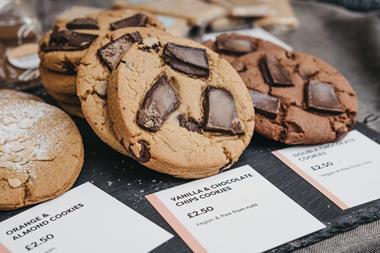



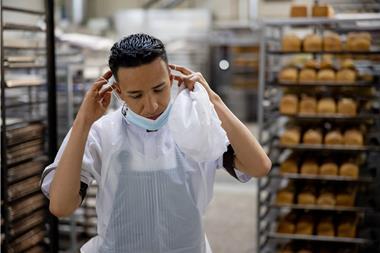


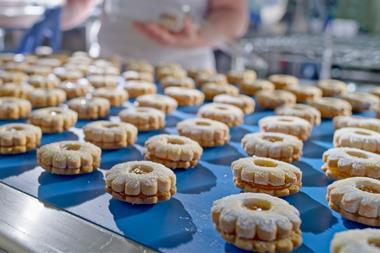


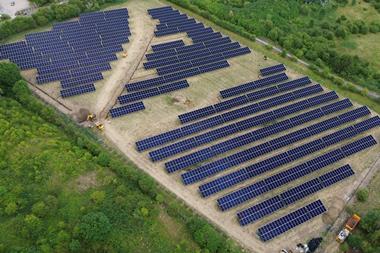

No comments yet